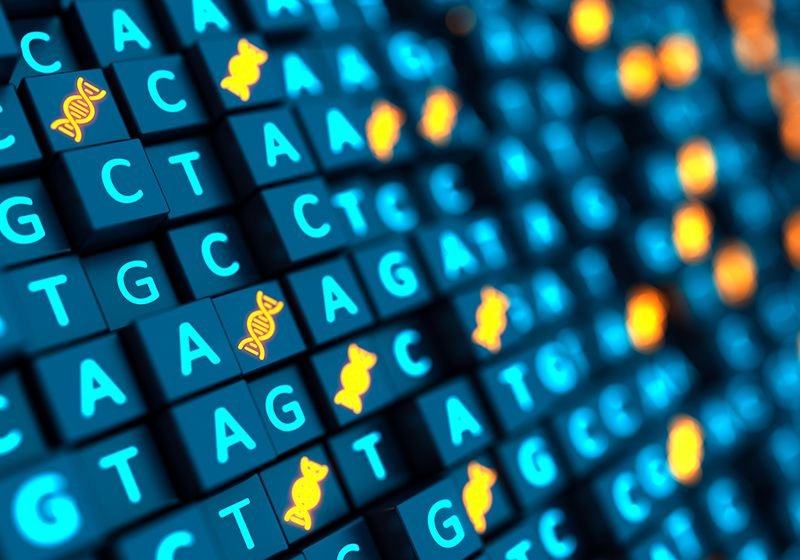After a postdoctoral research position with CRISPR pioneer Feng Zhang, Neville Sanjana set out to target numerous genes at once with the nascent technology, developing pooled CRISPR screens.1,2 Now a geneticist and bioengineer at the New York Genome Center and New York University, Sanjana developed a new technique that combines CRISPR with genome-wide association study (GWAS) data and single cell technology to explore the effects of hundreds of variants in parallel.3
Using STING-seq, short for systematic targeting and inhibition of noncoding GWAS loci with single cell sequencing, Sanjana and his team identified promising sequence variants linked to various polygenic blood traits. Most of these variants map to noncoding genomic regions, making it unclear which genes they affect. To determine target genes for certain traits, STING-seq uses CRISPR to repress GWAS variants of interest and allows researchers to see the downstream effects of this repression on transcripts and proteins through single cell sequencing.
Why did you combine CRISPR screening with single cell sequencing and GWAS analysis?
Neville Sanjana and his colleagues developed STING-seq to identify and test interesting sequence variants in noncoding genomic regions.

Judy Quinn, New York Genome Center
There are amazing GWAS databases, such as the UK Biobank that we used in our study, but we can only do correlative studies with this data, comparing people with and without the disease to see what is different. One of the fundamental challenges is to understand which variants cause a trait or disease. That is difficult because it is hard to break up linkage disequilibrium. A person inherits pieces of their genome from their parents, and some of those pieces travel together. We might not know whether one variant in a dataset is causal or if it is co-inherited with the actual causal variant. Additionally, most common variants are in noncoding regions. Because they are not within a gene, we may not know what they do.
When I came to my current institution, I was surrounded by researchers who did single cell experiments. Because CRISPR screens focus on many genes, it became clear that it would be powerful to pair up these technologies. We previously could knockout each gene in the human genome with genome-scale CRISPR libraries, but we were assessing one phenotype at a time. When we couple CRISPR with single cell, multi-omic readouts, we can look at many genetic perturbations and multiple phenotypes. Coupling CRISPR screens with single cell approaches simultaneously allows for the systematic targeting and inhibition of noncoding GWAS variants.
How did you employ STING-seq?
With this method, we can address the linkage problem, identify causal variants that are involved with a particular trait or disease, and figure out which genes are targets.
– Neville Sanjana, New York Genome Center and New York University
Using STING-seq, we targeted and inhibited hundreds of candidate blood trait variants in noncoding cis-regulatory elements. We treated human cells with a CRISPR system that represses the area it binds to rather than cutting it and performed a single cell sequencing method, looking at each perturbation at the transcript and protein levels. With this method, we can address the linkage problem, identify causal variants that are involved with a particular trait or disease, and figure out which genes are targets.
Parking a giant CRISPR repressor on DNA is helpful for discovering causal variants, but it is not realistic in a biological sense. STING-seq inhibits areas of the genome using a repressor, so we only saw decreases in gene expression. Because different variants might cause various gene expression changes, we then developed base editing STINGseq (beeSTINGseq) to make single nucleotide edits. We targeted genomic regions where a cytosine to thymine (C to T) base editor would impart a sequence change that matched certain variants in our GWAS data. In one example, a T edit made the expression of a target gene go up compared to the original C allele, so we learned how this genetic variant worked through that gene.
Did any of your results surprise you?
We found two variants that influenced the same transcription factor gene, but one had an effect that was twice as strong as the other. Because transcription factors interact with many genes, these variants affected many downstream genes in trans at the same level as the target transcription factor. This gives us a good sense of how the genome is wired, and it helps us understand the purpose of noncoding variants, where they can have subtly different effects on a gene in cis that then changes gene expression across the whole genome.
What is next for STING-seq?
As somebody who loves the idea of using functional genomics to understand and treat disease, my hope is that researchers will use STING-seq to study as many diseases as possible and find genes that are useful for developing next generation therapeutics.
This interview has been condensed and edited for clarity.
References
- Sanjana NE, et al. Improved vectors and genome-wide libraries for CRISPR screening. Nat Methods. 2014;11(8):783-784.
- Shalem O, et al. Genome-scale CRISPR-Cas9 knockout screening in human cells. Science. 2014;343(6166):84-87.
- Morris JA, et al. Discovery of target genes and pathways at GWAS loci by pooled single-cell CRISPR screens. Science. 2023;380(6646):eadh7699.










